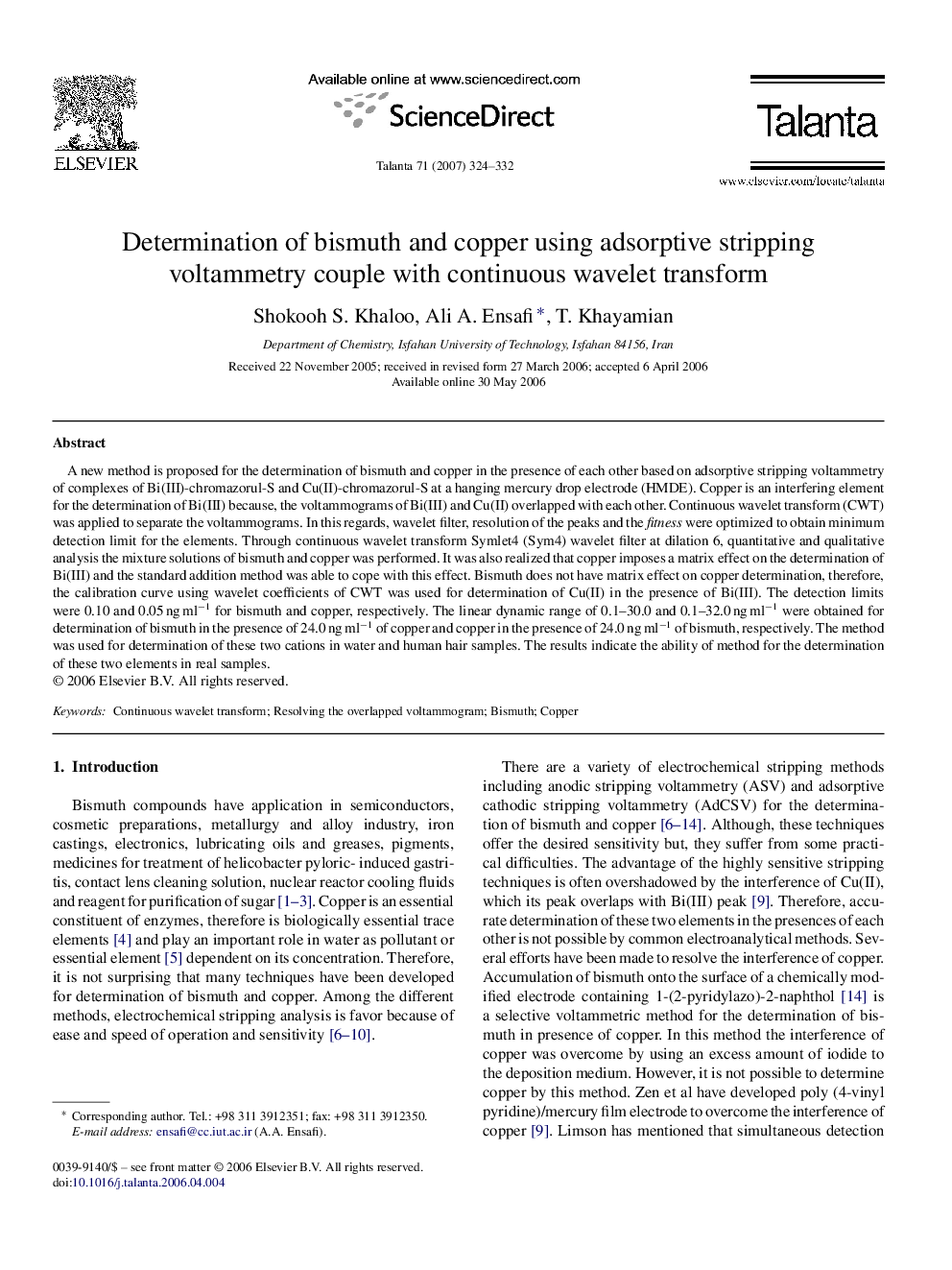| Article ID | Journal | Published Year | Pages | File Type |
|---|---|---|---|---|
| 1246075 | Talanta | 2007 | 9 Pages |
Abstract
A new method is proposed for the determination of bismuth and copper in the presence of each other based on adsorptive stripping voltammetry of complexes of Bi(III)-chromazorul-S and Cu(II)-chromazorul-S at a hanging mercury drop electrode (HMDE). Copper is an interfering element for the determination of Bi(III) because, the voltammograms of Bi(III) and Cu(II) overlapped with each other. Continuous wavelet transform (CWT) was applied to separate the voltammograms. In this regards, wavelet filter, resolution of the peaks and the fitness were optimized to obtain minimum detection limit for the elements. Through continuous wavelet transform Symlet4 (Sym4) wavelet filter at dilation 6, quantitative and qualitative analysis the mixture solutions of bismuth and copper was performed. It was also realized that copper imposes a matrix effect on the determination of Bi(III) and the standard addition method was able to cope with this effect. Bismuth does not have matrix effect on copper determination, therefore, the calibration curve using wavelet coefficients of CWT was used for determination of Cu(II) in the presence of Bi(III). The detection limits were 0.10 and 0.05 ng mlâ1 for bismuth and copper, respectively. The linear dynamic range of 0.1-30.0 and 0.1-32.0 ng mlâ1 were obtained for determination of bismuth in the presence of 24.0 ng mlâ1 of copper and copper in the presence of 24.0 ng mlâ1 of bismuth, respectively. The method was used for determination of these two cations in water and human hair samples. The results indicate the ability of method for the determination of these two elements in real samples.
Related Topics
Physical Sciences and Engineering
Chemistry
Analytical Chemistry
Authors
Shokooh S. Khaloo, Ali A. Ensafi, T. Khayamian,
